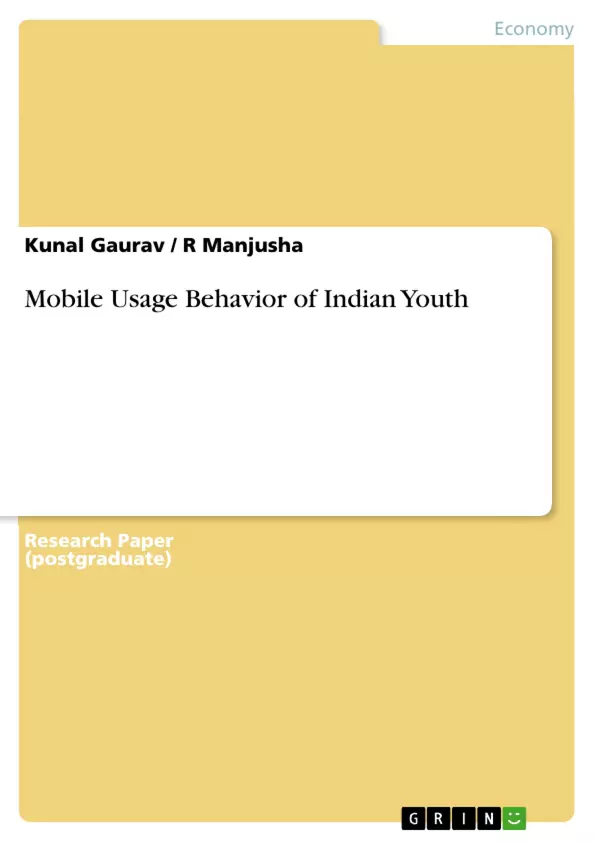In today’s life mobile phone usage has become an important necessity of our life. The cell phone industry is one of the fastest-growing ones besides the Internet. Cell phones have gone through a huge change and the market has expanded globally. Cell phone users today use cell phones for more than just talking; the mobile services consumer wireless usage study found that 56 percent of customers used their cell phones as cameras, clocks, calendars, music players, and other non-talk functions. The purpose of this study is to understand the Mobile usage behavior by young customers in India.
India is currently the world’s second-largest telecommunications market and has registered strong growth in the past decade and a half. The Indian mobile economy is growing rapidly and will contribute substantially to India’s gross domestic product (GDP), according to a report prepared by the GSM Association (GSMA) in collaboration with the Boston Consulting Group (BCG). The cell phone industry is in the Mature Life Cycle Stage, where nearly all potential customers are already users of the industry’s product.
Inhaltsverzeichnis (Table of Contents)
- INTRODUCTION.
- Overview
- Objectives of the Study.
- Scope of the Study.
- Review of Literature........
- Research Methodology.
- Type of research..........\li>
- Sampling Unit..
- Sampling Technique ………………………….
- Questionnaire Design....
- Data Collection Sources
- Plan for Data analysis
- DATA ANALYSIS AND INTERPRETATION.
- Factor Analysis.
- Frequency Analysis..........\li>
- CONCLUSION..
- Limitations and Future Directions....
- Limitations......
- Future Directions
- BIBLIOGRAPHY
- Appendices.
Zielsetzung und Themenschwerpunkte (Objectives and Key Themes)
This study aims to understand the mobile usage behavior of young customers in India, specifically in Hyderabad. Using a quantitative research design, it seeks to gain insights into how and why young people use their mobile phones. The research utilizes a convenience sample of mobile users aged 14-40 years, gathering data through a questionnaire that explores both demographic details and mobile phone usage patterns. The study employs factor analysis to analyze the data, uncovering six key factors that influence mobile usage behavior.
- Mobile Usage Behavior of Indian Youth
- Factors influencing Mobile Usage
- Quantitative Research Methodology
- Factor Analysis
- Mobile Phone Usage Patterns
Zusammenfassung der Kapitel (Chapter Summaries)
The study begins with an introduction outlining the research objectives and scope. It then delves into a review of existing literature on mobile usage behavior, followed by a detailed description of the research methodology employed. The subsequent chapter focuses on data analysis and interpretation, utilizing factor analysis to identify the six key factors influencing mobile usage behavior. The study concludes with a discussion of limitations and potential future research directions.
Schlüsselwörter (Keywords)
The study focuses on mobile usage behavior, young customers in India, quantitative research, factor analysis, mobile phone usage patterns, and the six key factors identified through the study: Career Orientation, Technological Advancement, Future Outlook, Self Development, Relaxation, and Wide Exposure.
- Arbeit zitieren
- Dr. Kunal Gaurav (Autor:in), R Manjusha (Autor:in), 2016, Mobile Usage Behavior of Indian Youth, München, GRIN Verlag, https://www.grin.com/document/375897



